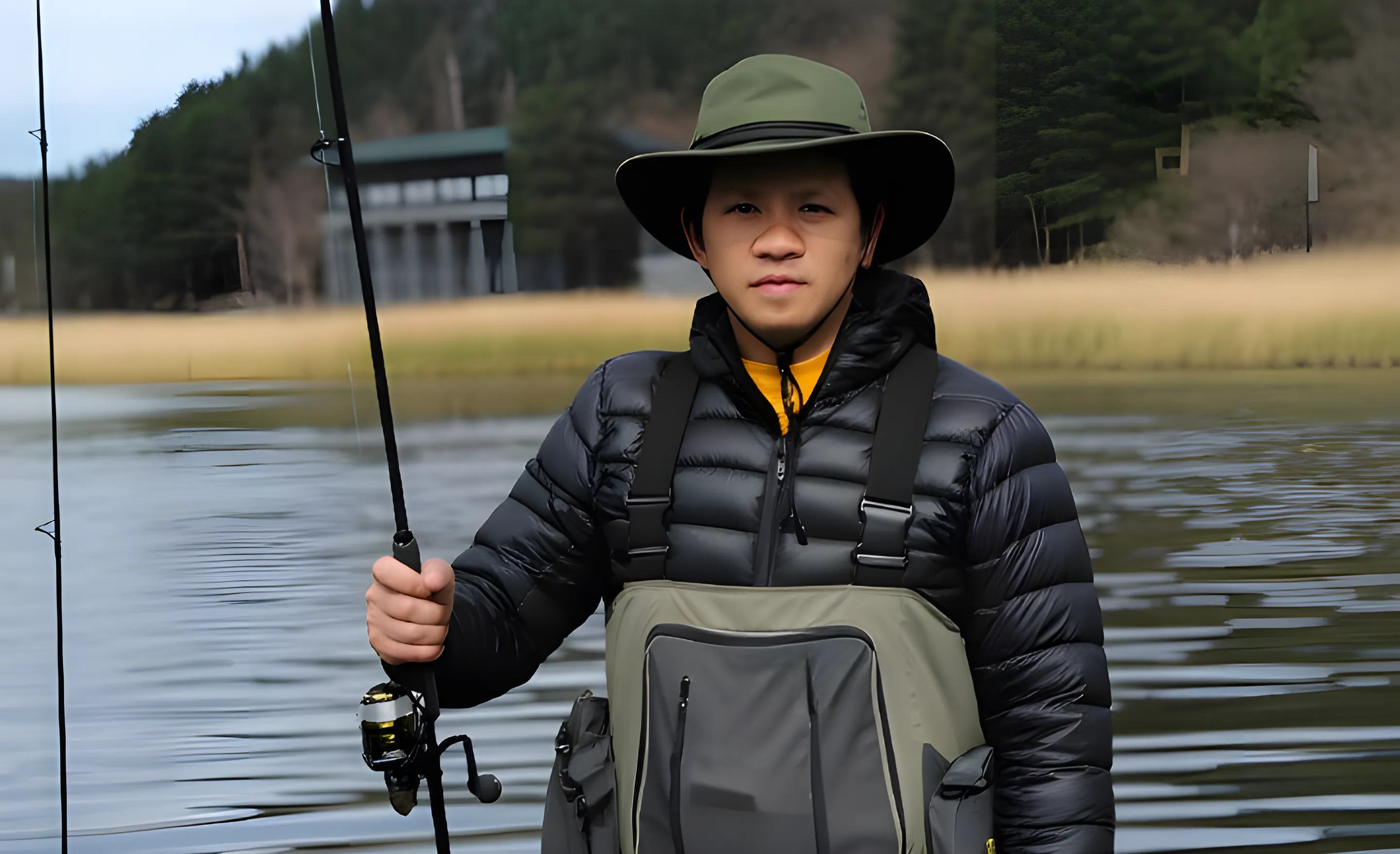How to Fish a Ned Rig in Grass - Without Ever Getting Snagged Again
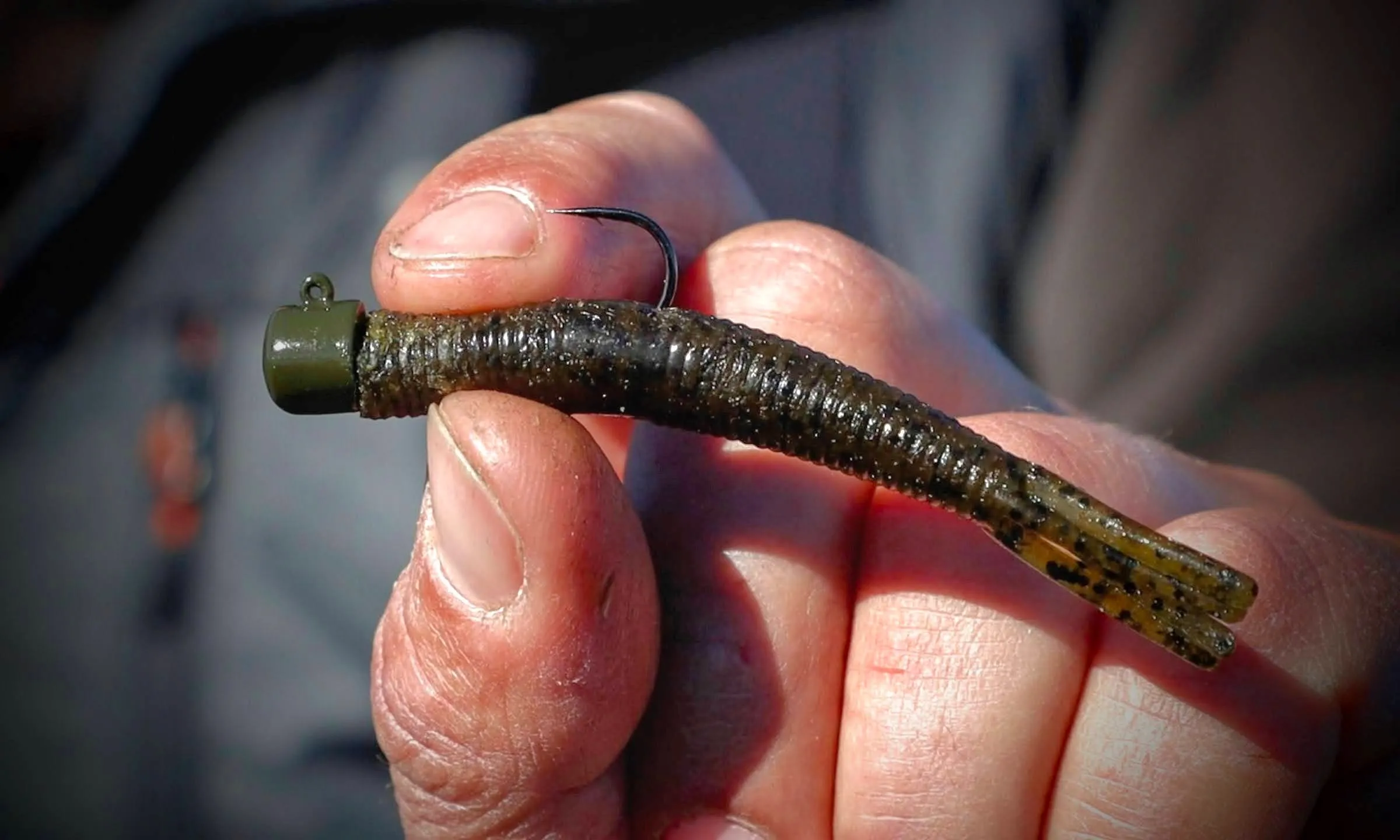
Fishing in grassy lakes can be frustrating. You know the bass are in there, hiding in that thick vegetation, but every cast seems to end with a snag and a clump of weeds.
If that sounds familiar, it's time you mastered the Ned rig. This simple finesse presentation is secretly one of the most effective tools for pulling big bass out of the thickest cover, making it a key player among the best bass fishing rigs for tough conditions. It’s not just a small-fish catcher; it’s one of the best bass fishing techniques for when the bite gets tough.
This guide at riversiderelics.com, I will show you exactly how to fish a Ned rig in grass, from the essential gear to the pro-level techniques that keep you snag-free and in the strike zone.
Key Takeaways: Ned Rigging in Grass
Go Weedless: The single most important factor. Use a weedless jighead, like one with an EWG hook, to prevent snags.
Use Buoyant Plastic: Choose a soft plastic that floats, like Z-Man's ElaZtech. This allows the tail to stand up and create an irresistible, natural presentation.
Keep Your Rod Tip Up: Maintain a high rod angle (around 10 o'clock) to help the rig glide over the top of the grass instead of digging into it.
Slow is Pro: A slow, steady retrieve with long pauses is often the most effective method. Let the rig do the work.
Why the Ned Rig Dominates in Weedy Waters
The Ned rig’s magic lies in its simplicity and subtlety. Unlike a bulky jig or a fast-moving crankbait, its small profile allows it to effortlessly slip through grass and weeds.
Because it's lightweight, it sinks slowly and naturally, mimicking injured prey. This slow fall is often when bass strike. While this differs from the side-to-side shimmy you get when you learn how to fish a wacky rig, the core principle of a slow, non-threatening descent is what makes both techniques so deadly.
The compact size means less surface area to catch on vegetation, letting you present your bait in pockets and along weed edges where other lures simply can't go.
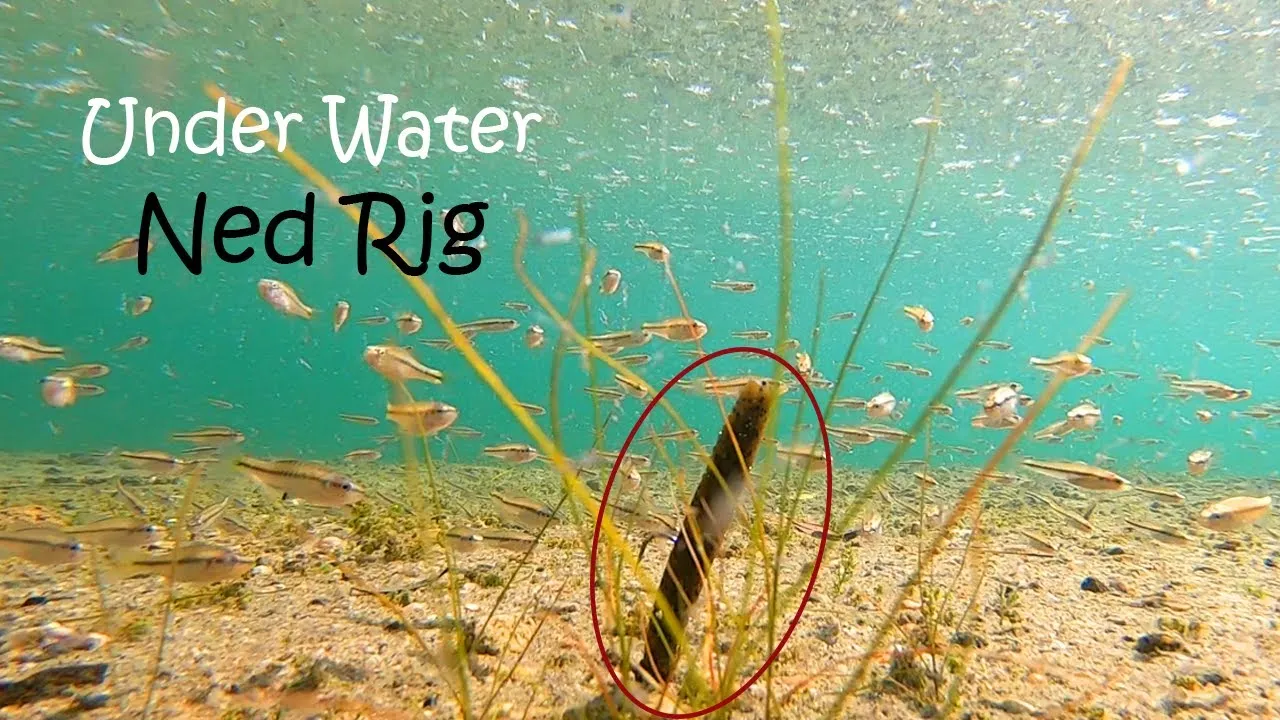
Your Essential Gear for Grass Fishing
Having the right setup is crucial. A balanced, sensitive combo allows you to feel subtle bites and effectively work the lure through cover.
Rod and Reel
A 6'10" to 7'3" medium-light power, fast-action spinning rod is ideal. This gives you the backbone to pull fish from cover while maintaining the sensitivity needed for a finesse approach.
Pair it with one of the best bass fishing spinning reels in a 2000 or 2500-size. A smooth drag is non-negotiable.
Line and Leader
This is the perfect scenario for a braid-to-fluorocarbon setup.
-
Main Line: 10-15 lb braided line. It’s strong, has no stretch for better sensitivity, and its thin diameter cuts through grass easily. This is often considered the best fishing line for bass when fishing in heavy cover.
-
Leader: A 2-4 foot leader of 6-10 lb fluorocarbon. It's nearly invisible underwater and provides a bit of abrasion resistance.
The Game-Changing Jighead
Forget standard mushroom-style Ned heads for this job. You must use a weedless version. This principle of rigging a bait to be snag-proof is the foundation of many great techniques, from the classic Texas-style setup here to the clever design of the chicken rig for bass.
My go-to choices are the Z-Man NedlockZ EWG Jighead or the Owner Block Head. Start with a 1/16 oz or 1/10 oz weight. Go up to 1/8 oz only in deeper water or denser grass.
The Perfect Soft Plastic
Buoyancy is key. You want a bait that will float off the bottom when you pause your retrieve.
The classic choice is the Z-Man Finesse TRD™. Its ElaZtech material is extremely durable and naturally buoyant, causing the tail to stand straight up at rest, perfectly imitating a small creature feeding on the bottom.
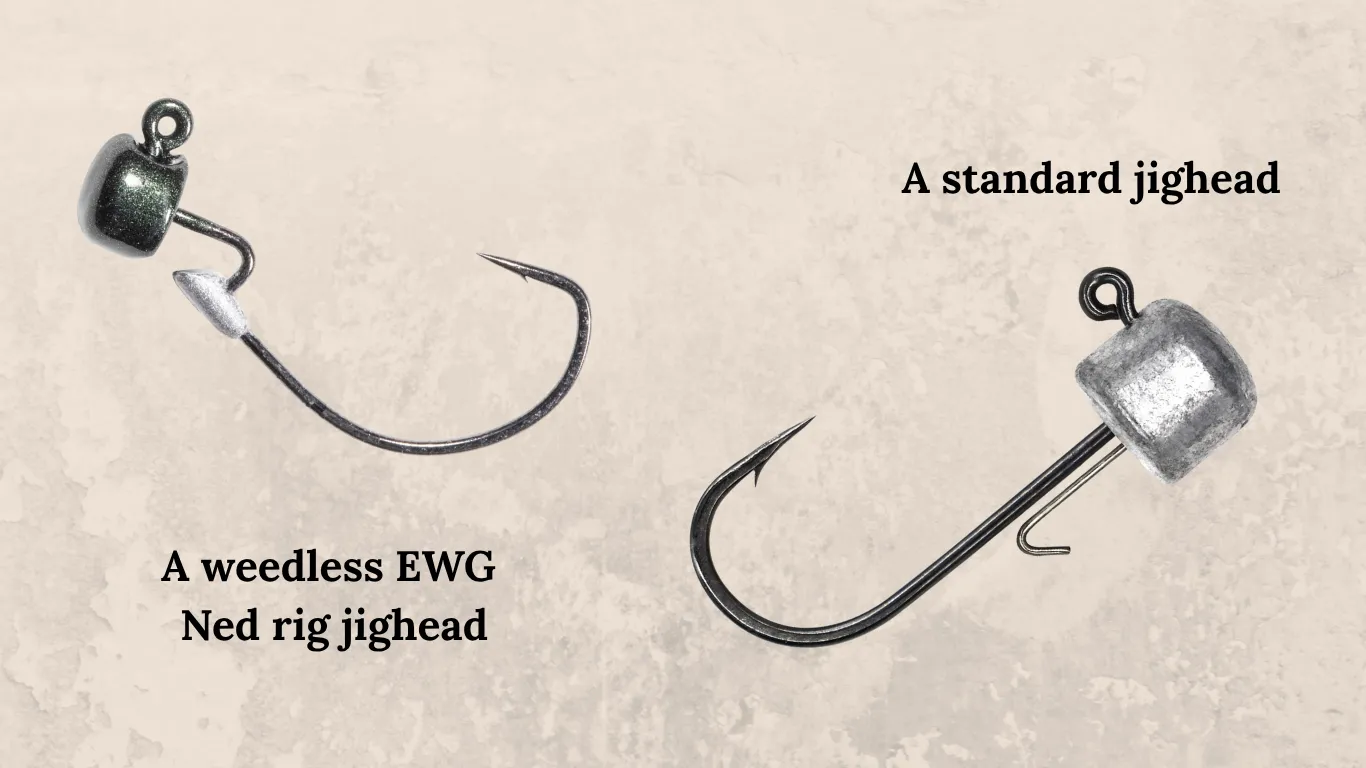
How to Rig It: The Snag-Proof Method
Rigging your Ned rig to be weedless is simple. If you've ever used a Texas rig, you already know how.
-
Insert the hook point into the nose of the soft plastic and bring it out about a quarter-inch down.
-
Slide the plastic up over the bait keeper on the jighead.
-
Rotate the hook and re-insert the point into the body of the plastic, making sure the bait is perfectly straight.
-
Push the hook point all the way through, then pull it back slightly so the tip is just barely covered by the plastic (skin-hooked).
This creates a streamlined, snag-proof presentation that will glide through vegetation.
Proven Retrieval Techniques for Weedy Waters
How you move the bait is just as important as the gear you use. Experiment with these three retrieves.
1. The Drag and Pause
This is the most reliable technique. Cast out and let the rig sink to the bottom. While the Ned rig excels at this bottom-oriented presentation, sometimes bass prefer a vertically suspended bait, which is where learning how to fish a drop shot rig can be a huge advantage in grassy areas. With the Ned, slowly pull the bait a foot or two, then stop and let it sit perfectly still for 5-10 seconds. This stand-up action on the pause is unique compared to sliding-weight systems where the bait moves more independently, a key difference when you how to fish the free rig or use a mojo rig.
2. The Hop and Skip
In sparser grass, a "hop and skip" can trigger reaction strikes. Instead of dragging, gently lift your rod tip to make the bait hop up and over a clump of grass. This differs from the heavy-duty approach of Tokyo rig fishing, which uses a long dropper to keep the bait above the bottom debris in very thick cover. Let your Ned rig fall back to the bottom on a slack line.
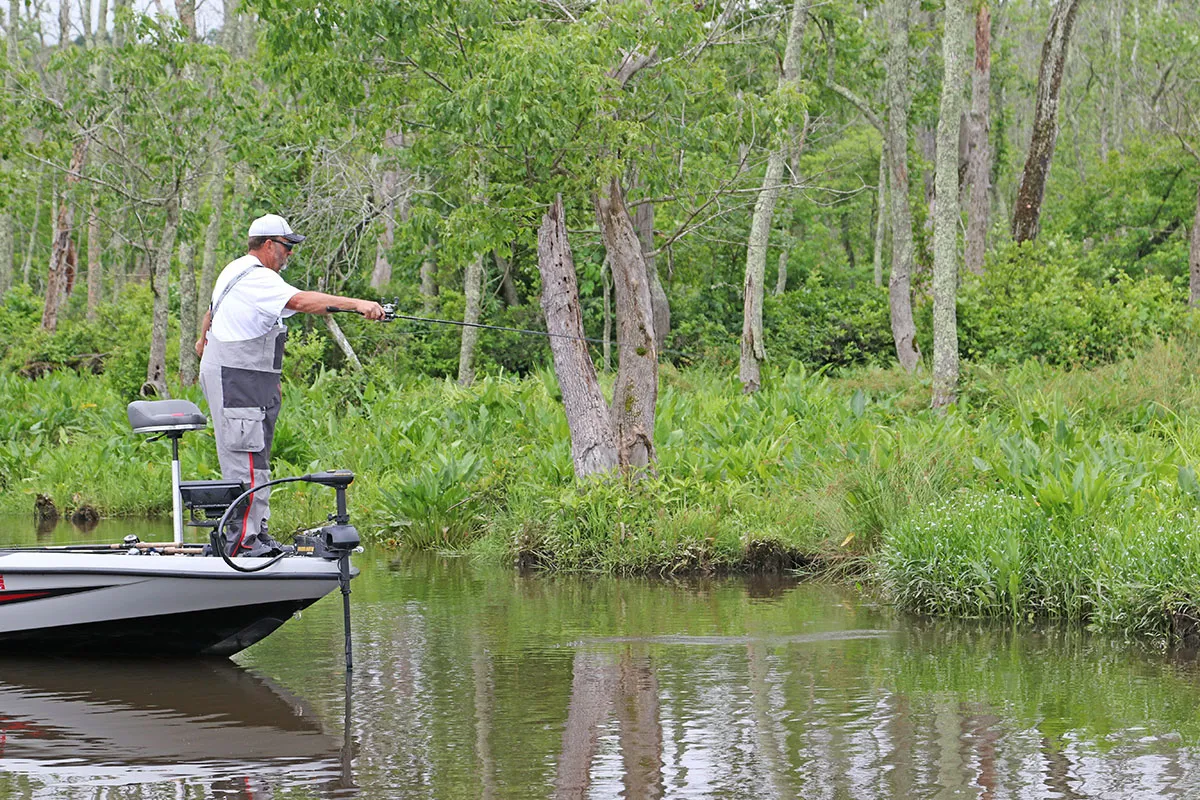
3. The Slow-Roll
When bass are lethargic (cold water or high sun), a super-slow, steady retrieve can work wonders. Simply cast out and reel just fast enough to feel the bait ticking the tops of the grass. It's a subtle presentation for tough conditions.
Adapting to the Seasons
-
Spring: As bass move to shallower, grassy flats to spawn, use a very slow drag-and-pause retrieve along the edges of new grass growth.
-
Summer: Bass seek shelter from the heat deep within thick grass mats. This is also when topwater frog fishing techniques can be incredibly exciting, coaxing explosive strikes from bass hiding under the canopy.
-
Fall: Bass are feeding aggressively. This is the time for fall bass fishing, and you can speed up your retrieve and use the "hop and skip" method to generate reaction strikes in thinning vegetation.
-
Winter: Bass are lethargic in deep, remnant grass. A deep, slow presentation is key for fishing bass in the winter, so use the lightest jighead possible and the slow-roll technique, or let the rig sit motionless for extended periods.
Pro-Level Insights
-
Target Irregularities: Don't just cast into the middle of a grass flat. Look for irregularities: points, inside turns, isolated clumps, or transitions where grass meets sand or rock. That's where bass set up ambushes.
-
"Listen" With Your Line: Pay close attention to your line. This level of sensitivity is also critical for newer Japanese techniques like the hover strolling rig (mid-strolling), where detecting the most subtle changes is key to getting bit.
-
Learn from the Best: As top pro anglers often emphasize, the key to finesse fishing is letting the bait's natural action work for you. Don't over-impart action; trust the design of the rig.
Conclusion
The Ned rig is more than just another lure; it's a complete system for dissecting weedy cover with confidence. By combining a weedless jighead, a buoyant soft plastic, and the slow, deliberate retrieves we've covered, you're no longer just casting-you're strategically hunting. Mastering how to fish a ned rig in grass isn't about magic; it's about applying these proven principles to stay snag-free and in the strike zone longer. So, stop seeing those grass flats as obstacles and start seeing them as opportunities. Tie on a Ned, put these tips into practice, and get ready to feel that tell-tale 'tick' on the end of your line. The bass are waiting.
Aviv Nguyen is a passionate fisherman who loves sharing stories and tips from his fishing adventures. Whether it’s freshwater or sea, he finds joy in every cast and aims to inspire others to enjoy the great outdoors through fishing.
Share This Post With Friends

